Why is Nobody Talking About The Reality in Compounding?
Compounding is not exactly how everybody tells you

If you're an investor (or), have been planning to invest in financial instruments like stocks. Then I am sure that you might have come across this concept called 'Compounding.'
And often experienced investors phrase this concept as 'beautiful' (or) they might even phrase it something like 'beauty of compounding.' Which it is…..
But there is a thinner line between 'how compounding is explained/shown to you' versus 'how compounding actually works in real life if I am talking in terms of stock markets.
Anyhow in this article, I would like you to look at both sides. At one end, 'how people simplify compounding' and at another end where you get to see 'how compounding works on reality.'
Simplified Version of Compounding
The basic understanding of compounding is earning interest upon your existing capital and later earning interest upon your interest too. In the textbook, it sounds more sensible as they got all formulas and numbers to go with.
Now, that's okay.
Compounding can be simple, but when we apply such concepts to the real-word, it is not simple anymore.
Personally, I started my stock investing journey 8 months ago, and as far as I can remember, CNBC's video on compounding was the first video I saw on compounding.
The video was truly knowledgeable. After watching that video, I was enlightened about the effect and impact of compounding. Within that video, Josh Brown shares some crazy facts/numbers like,
If you line up dominos in order and each dominos get 50% bigger than the last one. How many dominos would it take to match Empire States Building's height?
The answer was '32 Dominos'.
Anyhow after that video, I watched dozens of other videos where people were explaining and simplifying compounding. Many people explained compounding through a nice excel sheet, and, in here, I wanna do that too.
Now assume that you have decided to invest $2000 each year starting from year 2000 into the stock market for 20 years.
By not being too greedy, we will expect a return of 10% year on year. Now, if we run these numbers through the formulas on the excel sheet, you can see that….
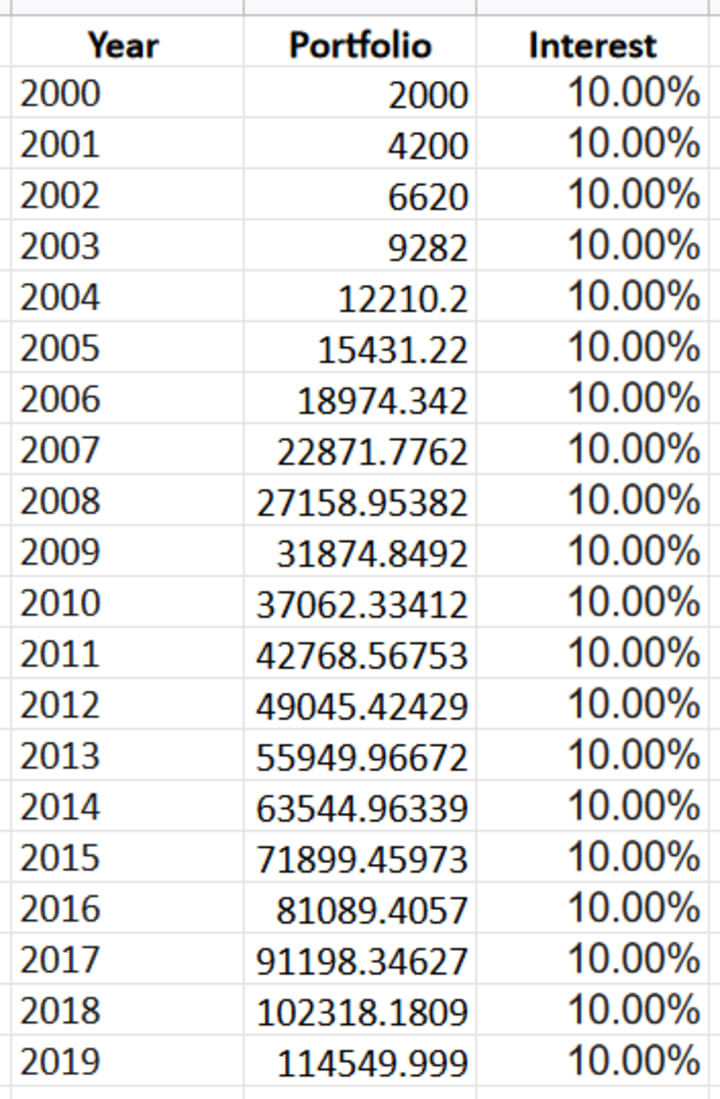
After 20 years, your portfolio size would grow to $114k, whereas invested capital is just $40k. The reason for such gains is just because your money left in the market for 20 years and it got the chance to grow, and in this case, your money got compounded.
Here if I plot a graph of your investment. Then you would see a nice curve which is on the upward trend. Usually, this is what I think people expect when they initially think about compounding.
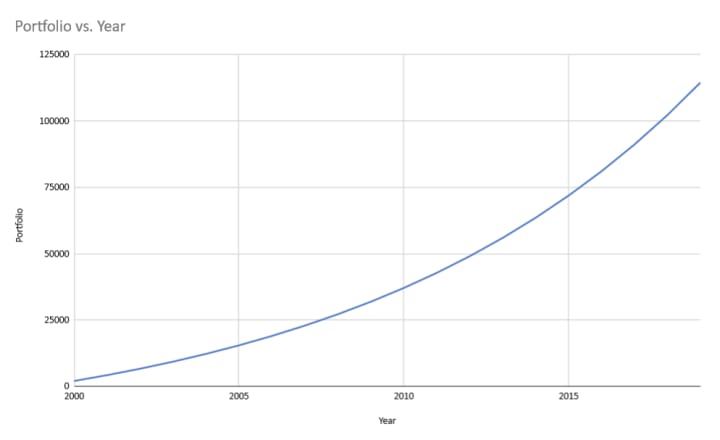
But what if I say that's not true?
The Reality in Compounding
Have you noticed something in the above graph (or) from the numbers that I pilled on the sheet?
It's the 'base' amount of each year. Even though you invested $2000 each year, the amount was constantly increasing/multiplying/compounding.
This is where the 'lie' lies
Every year when you invest in the stock market. You are not guaranteed growth year on year and also do forget about consistent growth.
But still being said that your money can compound, but it isn't going to compound the way you think.
To explain this better, let take an example. Below is the month-on-month returns data of the NIFTY 50 (an Indian stock market index because I couldn't find NASDAQ data and fit it into a sheet).
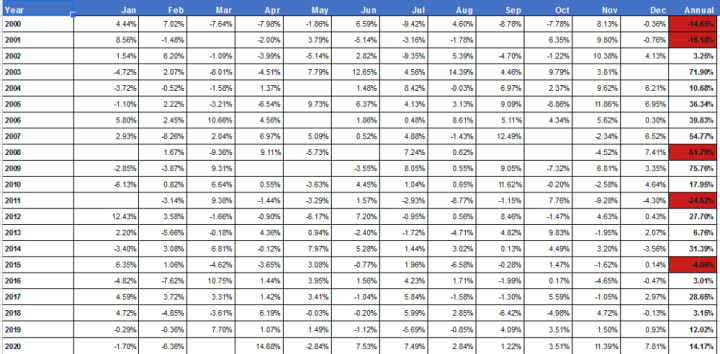
In the above sheet, I took the data from 2000 to 2020 (20 years). If you can notice, I have listed year-on-year returns too, and some of them are marked in red which indicates that 'investors got negative returns in those financial years.
For now, assume that in NIFTY 50, if you would have invested $2000 each year starting from 2000 and if you would have invested for 20 years, then you would have grown your portfolio to $150k.
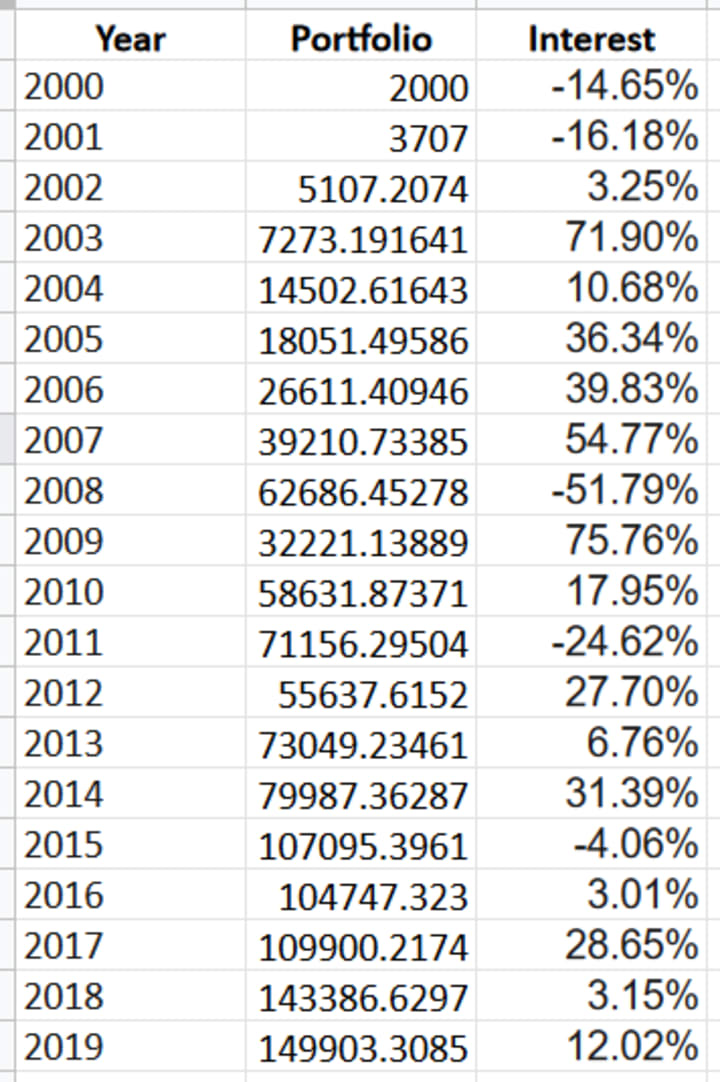
Even though your overall investment grew more than 10% year-on-year, but the graph isn't similar to the above one. In fact it would be something like this,

Precisely this is what the reality is in compounding. When you invest your money to grow, you can't exactly to have a stable 'base,' and hence your growth isn't guaranteed, and your growth rate isn't guaranteed too.
When people try to sell you compounding, they talk about the bigger picture of how you can invest for a long-time and grow big. But here, the caveat is that there are going to be years with lower returns, if not negative returns. If you don't believe just check the graph and look for the returns during 2008–2010.
But that's the way things happen in stock markets, and no matter what concept you rely on while investing there are going to be pitfalls. Hence you need to understand the nature of risks, returns, markets, and investments in the stock market.
Conclusion:-
Hence that's it. There is not much to say. I think you would have understood by now that compounding doesn't mean consistent returns, and this is the fact that most people don't talk about when they glorify compounding.
Being said that, compounding is the best financial concept that one could leverage upon being a long-time investor. But still, through this article, all I wanted to tell you is that 'There won't be any straight line/upward curve if you choose to compound your money through financial instruments like stocks.'
This article was first publihsed on Medium:- https://themakingofamillionaire.com/why-is-nobody-talking-about-the-reality-in-compounding-a85d87b33397
About the Creator
Rahul Thakur
Hi, I am Rahul Thakur a Freelance writer and marketer. Apart from awesome writing, I do marketing for my clients too. For services like SEO, Guest Posting, and Content Writing. Contact me here:- [email protected]


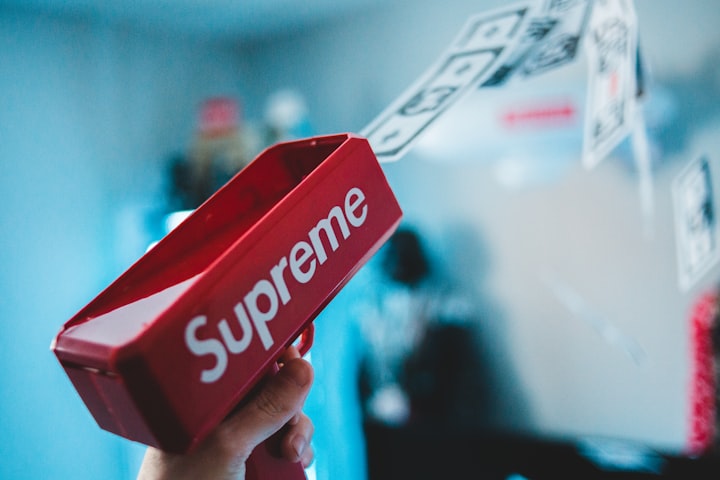



Comments
There are no comments for this story
Be the first to respond and start the conversation.